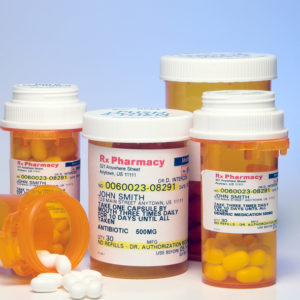Paying for prescription drugs has become a lot like buying a used car. In this scenario, the sleazy car dealer is an entity called a pharmaceutical benefits manager, or PBM. Instead of standing between a consumer and an automobile, these middlemen act as gatekeepers between drug manufacturers and patients.
Just like a car, prescription drugs all have a sticker price that you should never agree to pay. But PBMs, in their role as sketchy salesman, kick-up a lot of dust that drives patients to pay top-shelf prices at the pharmacy counter. All while pocketing the savings patients should have enjoyed directly.
The arrangement has contributed to skyrocketing drug costs. Americans paid $360 billion for prescription drugs last year—up nearly 300 percent since 2000.
Middlemen have a lot of power because of the millions of patients they represent through insurance companies. Drug manufacturers are compelled to work with PBMs because they have control over which drugs make it to the broader market. To get on the “nice list,” drug producers offer incentives in the form of rebates and discounts. These financial windfalls are collected by PBMs and are partially passed along to insurance companies. In 2018, middlemen collected more than $160 billion in rebates and discounts from drug companies.
Where do I sign-up? Seems like a sweet gig.
While middlemen are raking in the dough, guess who’s stuck paying sky-high prices? Patients at the pharmacy counter who receive no direct benefit from the current discount system.
EpiPen—the common drug used to treat allergic reactions—provides an informative case study into the covert pricing scheme. In 2016, the EpiPen sticker price surged to more than $600—a 60 percent jump compared to just two years prior. Curiously, at the same time, the manufacturer was providing the medication for less than half that price. So where was the rest of the money going? It turns out middlemen pocketed the difference as prices soared for everyone else.
It’s a cautionary tale that watchdog groups should be on the lookout for elsewhere.
The Trump administration tried to end this system of backroom deals and cut out the middlemen in favor of shifting drug discounts already provided by manufacturers to the pharmacy counter. The goal was to provide patients with the savings, rather than middlemen trying to game the system. Although the executive order only targeted drugs covered by Medicare Part D, the policy would have had a ripple effect that pushed pharmaceutical prices down across the board.
Unfortunately, the Biden administration is attempting to preserve the status quo and recently pushed back the implementation date of the rule—a decision unsurprisingly celebrated by the middleman lobby. In their perfect world, they hope the delay will extend into a permanent dismissal of the idea. For the sake of patients, I hope that’s not the case.
The healthcare system in the U.S. is characterized by a complex web of regulations that artificially inflate the cost of healthcare. Prescription drug prices are another area that needs to be addressed. Hopefully, Congress will act where Biden won’t and inject price transparency into the pharmaceutical supply chain. That way, patients can access their drugs at a sub-sticker price, without the sketchy car salesman of the healthcare world getting in the way.

